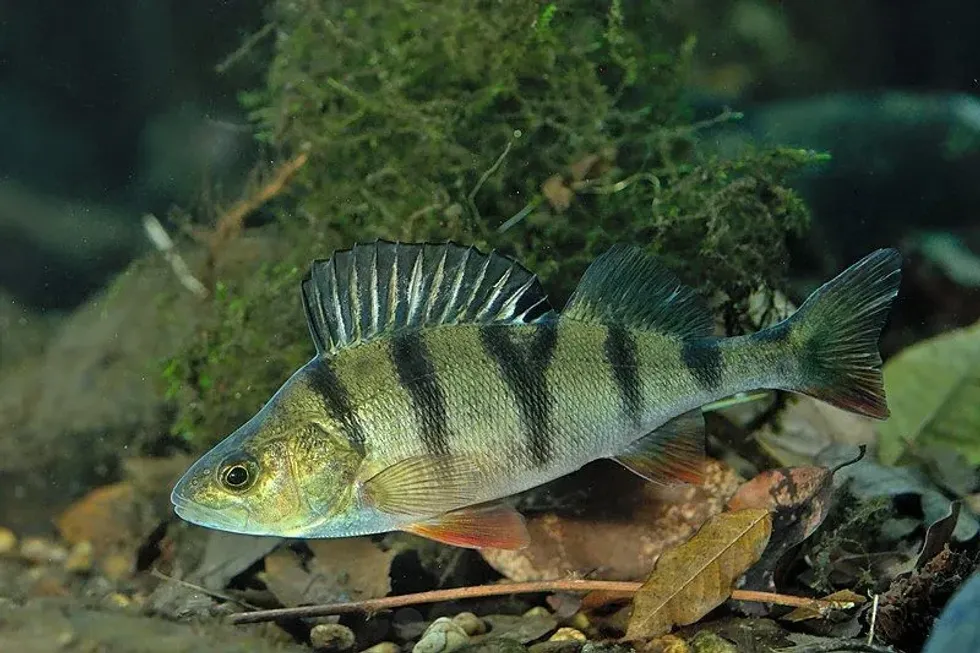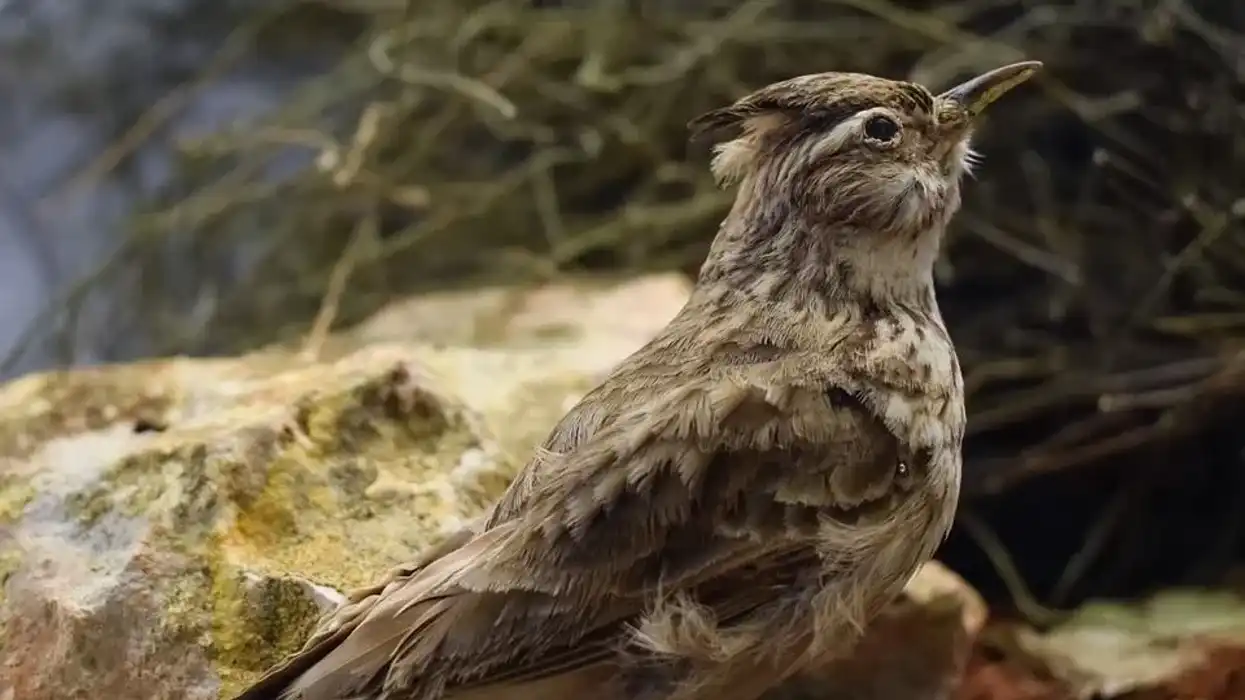If you go to the freshwater river or lakes of Europe for fishing, chances are that you might catch a medium-sized predatory fish - the European perch.
The European perch is a species whose distribution is concentrated mainly in European waters and parts of north Asia. However, the European perch is not only limited to Europe and Asia, but can also be spotted in South Africa, New Zealand, and even Australia.
This species is known by multiple names - Eurasian river perch, common perch, English perch, Eurasian perch, big-scaled redfin, redfin perch, hatch, or simply perch!
There are often instances where this species is mistaken for the yellow perch (Perca flavescens). But how to distinguish them? Keep reading to know!
Amazed knowing about these exciting facts on the European perch? You can ‘dive’ deeper and learn about other fishes from our pages on the black ghost knifefish and the giant guitarfish.
European Perch Interesting Facts
What type of animal is a European perch?
The European perches are a type of fish.
What class of animal does a European perch belong to?
The European perch (Perca fluviatilis) belongs to the class of Actinopterygii.
How many European perch are there in the world?
We are not aware of the total population estimate of the European perch around the world.
Where does a European perch live?
The European perch location is concentrated in all of the freshwater bodies of Europe (except the Iberian Peninsula) and northern regions of Asia. The range of these fish reaches the Siberian Kolyma River in the east.
Its distribution is also spotted in the Baltic Sea and the Bothnian Sea, lurking in its brackish waters. However, they have also been introduced in other regions, such as South Africa, Australia, and even New Zealand.
What is a European perch's habitat?
Usually, the European perch habitat is in freshwater bodies or even brackish water basins. They prefer living in ponds, slow rivers, or even deep lakes. They are known to avoid waters of cold temperature.
Who do European perch live with?
The European perch (Perca fluviatilis) live in large shoals.
How long does a European perch live?
The Perca fluviatilis species is known to live for up to 22 years.
How do they reproduce?
As they turn one year old, the male redfin perch becomes mature. However, the female takes her time, maturing between two to four years of age.
It has been observed in the northern hemispheres that this fish species has its spawning season between the months of February to July. Usually, the male fish arrive first to the spawning region.
The female fish deposits the cluster of eggs on submerged tree branches or other water vegetation. These eggs may be laid in long ribbons, sometimes extending up to 3.28 ft (1 m). Some even say that the eggs stick to the feet of water birds, and are then shifted across the water bodies.
Incubation goes on for anywhere between one to eight days. Within one to two weeks, the eggs hatch open.
What is their conservation status?
The Perca fluviatilis has been listed as a species of Least Concern in the IUCN Red List of Threatened Species.
European Perch Fun Facts
What do European perch look like?
These freshwater fish are green-mustard in color mainly and have a reddish color on its anal, caudal as well as pelvic fins. There are about five to eight dark straight, dark vertical bars on the sides of their bodies. The adult perches have a small hump situated between the head and the dorsal fin.
Generally, the perch fish has a round, long body. A true perch fish has ctenoid ‘rough’ scales.
Towards the front of the head, these fish have the lower mandible as well as the maxilla, small nostrils, and two eyes without any lids. Viewing this marine creature from the posterior side, you can see the opercular series, which performs the role of protecting the fish’s gills.
The first dorsal fin also has a dark blotch on the back of it. Also present is the lateral line system, effectively helping the perch in sensing the vibrations underwater. These fish have their pelvic as well as pectoral fins in pairs.
Of the two dorsal fins possessed, the first dorsal fin is soft, while the second one is spiny. These dorsal fins might be joined, or separated.
The redfin perch have somewhere between 14-20 dorsal spines, two anal spines, and 29-42 vertebrae. A total of about 13-16 dorsal soft rays and 7-10 anal soft rays are also present. Their anal and pelvic fins are in shades of red to yellow.

How cute are they?
We don't really call this fish cute.
How do they communicate?
Unfortunately, we are not aware of how this fish communicates.
How big is a European perch?
The maximum length in the European perch record can grow up to is 24 in (61 cm). However, the usual European perch size is about 10-15 in (25-38 cm).
This makes them about 1.16 times the length of an Indian mackerel.
How fast can a European perch swim?
The information on European perch's speed is not known.
How much does a European perch weigh?
The European perch can weigh up to 8.4 lb (3.8 kg). However, this fish usually weighs between 1-3 lb (0.4-1.3kg).
What are their male and female names of the species?
Male and female European pearch do not have specific names.
What would you call a baby European perch?
Generally, a baby fish is referred to as 'fry'.
What do they eat?
This fish is one of the predatory ones underwater. The European perch diet includes aquatic invertebrates, zooplankton, and fry of other perch.
The adult European perch feed on fishes such as roach, minnows, sticklebacks, and even perch. Invertebrates are also an item on the perch's diet menu. The perch begins to feed on food once they grow up to a size of 4.72 in (12cm).
Are they aggressive?
It is true that the Perca fluviatilis species, in general, are naturally combative and aggressive. Hence, if you have any plans of keeping this fish in your aquarium, do keep it alone - adding any other fish, even if it is a perch, might consequently lead to fights.
Would they make a good pet?
They are not common as pets.
Did you know...
The Perca fluviatilis may be a predatory species, but they are also common prey to many marine creatures. Birds such as the great cormorant, the western osprey, and even the common kingfishers are some of the common predators to feed on the perch.
Among the Aves, European perches are a vital item in the food menu of the Dalmatian pelican. Even the Eurasian otter and the northern pike are known predators of this species.
The country of Finland celebrates the European perch as its national fish.
Multiple European municipalities and towns have this perch in their emblems. Some of these include German regions of Schönberg, Gröningen, and even Bad Buchau.
Farming European perch has been a common practice for ages. These farming practices have helped in the conservation of these fish.
This fish is, unfortunately, are host to many parasites such as the Camallanus lacustris roundworm, Cucullanus elegans, and even the Acanthocephalus lucii worms.
The name of this species, perch, is also named to a large vertebrate order called the Perciformes. This name was introduced the Greek term ‘perke’ meaning ‘perch’ and the Latin term ‘forma’ meaning ‘shape’.
The spawning season of the redfin is during the spring or the winter seasons.
The European perch (Perca fluviatilis) is often mistaken for the yellow perch (Perca flavescens), so how can they be differentiated while fishing? Here's the catch!
- Considering the weight, the adult perch of Europe is considerably heavier by a few pounds than a North American yellow perch. The common perch usually weighs between 1-3 lb (0.4-1.3kg), 8.4 lb (3.8 kg) being the maximum. On the other hand, the yellow perch weighs about 1 lb (0.4 kg), with the heaviest being about 3-4 lb (1.3-1.8 kg).
- The redfin is actually quite bigger than the yellow perch in terms of length. The average length of the yellow perch is about 8-10 in (20.3-25.4 cm), whereas the hatch grows up to 10-15 in (25-38 cm) in length.
- The yellow perch is, as the name suggests, has a golden-brown body hue. The Eurasian perch has more of a dark green or olive green tint. Sometimes they can even have a brownish color as well.
- The redfin, as the name goes, has red to brown-red fins on its body. The yellow perch is a proud owner of yellow or orange or red fins.
- The English perch are found mainly in the waters of Europe and the north of Asia. It was later introduced in the waters of other regions, such as New Zealand, Australia, and even South Africa. The yellow perch is found only in North America, concentrated in Canada and to the north of the United States.
Is European perch good for eating?
Absolutely! This fish is a popular one when it comes to fishing and even for delicious seafood dishes! The European perch taste is described to be of a good flavor, good for eating. Its flesh is said to have a flaky, firm texture of white color. This fish can be enjoyed either grilled, fried, or baked.
How do you catch a European perch?
As per 2013, the major countries involved in fishing the European perch are Russia, Finland, Estonia, Poland, and Kazakhstan. To catch the Perca fluviatilis, you need to equip your fishing rods with good baits.
For the perch, optimum fishing baits include weather loaches, minnows, brandling, goldfish, raw squid, small pieces of raw fishes such as sardine, mackerel, bluey, or jack mackerel, shrimp, maggots, worms, or even crayfish peeled tails.
One can even use artificial lures. They are equally effective in fishing, especially for European perch of medium size.
Fly-fishing is also possible by the use of artificial flies. The flies in use are imitations of the baitfish, which use color, flash, and rapid movement to get hold of the perch.
Here at Kidadl, we have carefully created lots of interesting family-friendly animal facts for everyone to discover! Learn more about some other fish from our neon tetra facts and hogfish facts pages.
You can even occupy yourself at home by coloring on one of our free printable European perch coloring pages.










